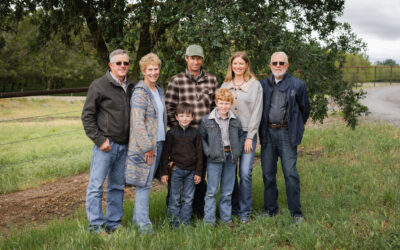
Expensive bulls aren’t that expensive
Growing up I remember arguing with my parents, telling them their economic reference points were stuck in the 1950s. They would tell me about times when a loaf of bread cost a nickel, the movies cost a dime, etc.
Any son hates to admit that they might be acting like their parents, but lately I have caught myself using economic reference points that are getting a bit dated. I still think all hotel rooms should cost less than $80, I should be able to take my family of four to the movies for less than $20, and $30,000 should buy the biggest, nicest truck on the market.

To recalibrate my economic reference points, I started doing some math. A few months ago, Miranda wrote about a calculator that Jim McGrann, emeritus ranch management economist at Texas A&M, developed to help determine what you could pay for a bull.
I played around with that calculator and used the “pounds of calf required to pay bull depreciation” feature for this comparison.
I used to think of $3,000 as a good average price for a registered Angus bull for a commercial herd, so I started from there. I went back in time about 5 years when feeder cattle were worth $90/cwt. and cull bull prices were $60/cwt. With those assumptions (and a 4-year productive life), that $3,000 required 21.3 lb. of calf to pay for his depreciation.
Using today’s figures of $175/cwt. feeders and $90/cwt. salvage bull price, a $5,000 bull only requires 19.3 lb. of calf to cover his depreciation. So my $3,000 average needs to be increased to $5,000 to remain on par.
Also, looking at “lb. of calf to pay for bull depreciation,” a $1,000 additional investment (going from $5,000 to $6,000) only requires an additional 5.7 lb. of calf from that bull to pay for himself.
Another way to look at it: every additional 6 lb. of weaning weight a bull can bring to my cowherd is worth me paying $1,000 more. Using my $5,000 base, if I find a bull with an 18-lb. WW EPD advantage over the average bull, he’s worth $8,000. That doesn’t even get into the added value a bull with better carcass EPDs can bring.
So going back and looking at some of the prices paid for registered Angus bulls in recent sales I am convinced most cattlemen are way ahead of me in doing this math. Paying up for a good bull really makes sense…. and dollars and cents.
-Mark
You may also like
Legacy in the Golden Land
On a quiet stretch of Northern California rangeland, a different story unfolds. The Borror family’s legacy modestly speaks through the cattle they raise, the ground they steward. The generations who’ve made a life here demonstrate commitment to doing things right, even when no one is watching.
Marbling, Feet and Fertility: Are they related?
The Angus breed has enough genetic diversity to allow breeders, and their commercial bull customers, to make progress across multiple traits simultaneously. One bloodline may be high in marbling but does not check the boxes you need for other traits. That does not mean marbling is the cause—it simply means your search for the ideal genetic pairing is not done.
Working for Premiums
The commercial Angus rancher from Collyer, Kansas, came back for daily homework in 1999 after a year at college. For 25 years now, he’s studied all the ways to grow his family’s W6 Cattle cow-calf herd with Angus at the base. Guided by data, Walt worked to improve the herd from zero Primes to averaging 60 percent. Learning what drives premiums prompted improvement.



